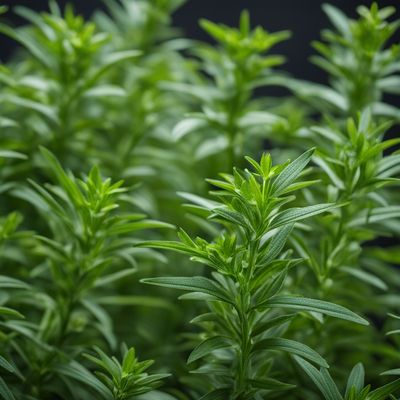
Ingredient
Stevia
The Sweet Secret of Stevia
Stevia is a plant-based sweetener that is extracted from the leaves of the Stevia rebaudiana plant. It is known for its intense sweetness, which is approximately 200-300 times sweeter than sugar. Despite its sweetness, stevia has zero calories and does not raise blood sugar levels, making it a suitable choice for individuals with diabetes or those watching their calorie intake. Stevia is available in various forms, including liquid extracts, powdered extracts, and granulated blends.
Origins and history
Stevia has a long history of use in South America, where it has been used for centuries as a natural sweetener. The indigenous Guarani people of Paraguay and Brazil were the first to discover and utilize the sweetening properties of the Stevia rebaudiana plant. Stevia gained popularity in Japan during the 1970s when artificial sweeteners were banned, leading to its widespread use in food and beverages. Today, stevia is cultivated and consumed worldwide as a natural sugar substitute.
Nutritional information
Stevia is a calorie-free sweetener that does not contribute to blood sugar spikes, making it a suitable option for individuals with diabetes or those following a low-calorie diet. It is also a non-nutritive sweetener, meaning it provides no significant vitamins, minerals, or macronutrients. However, compared to sugar, stevia offers a much sweeter taste with a fraction of the calories.
Allergens
Stevia is generally considered safe for consumption, and allergic reactions are rare. However, some individuals may experience gastrointestinal discomfort or mild allergic reactions, such as bloating or skin rashes. If you have any concerns or known allergies, it is advisable to consult with a healthcare professional before incorporating stevia into your diet.
How to select
When selecting stevia products, look for reputable brands that use high-quality stevia extracts. Read the ingredient list to ensure that the product contains pure stevia extract without any added fillers or artificial sweeteners. Additionally, consider the form of stevia that best suits your needs, whether it's liquid drops for beverages or powdered extracts for baking and cooking.
Storage recommendations
To maintain the freshness and quality of stevia products, store them in a cool, dry place away from direct sunlight. Liquid stevia extracts should be tightly sealed and refrigerated after opening. Powdered stevia extracts and blends should be stored in airtight containers to prevent moisture absorption and clumping.
How to produce
Stevia plants can be grown in home gardens or containers, provided they receive adequate sunlight, well-drained soil, and regular watering. The plants are perennial in warmer climates but can be grown as annuals in colder regions. Harvest the leaves as needed and dry them for later use or make homemade stevia extracts by steeping the leaves in water or alcohol.
Preparation tips
Stevia can be used as a sugar substitute in a variety of recipes, including beverages, desserts, and baked goods. It is important to note that stevia is much sweeter than sugar, so a little goes a long way. When using stevia in baking, it is often recommended to combine it with other ingredients, such as applesauce or yogurt, to maintain the desired texture and moisture in the final product.
Culinary uses
Stevia is commonly used as a sugar substitute in beverages like tea, coffee, and smoothies. It can also be used to sweeten desserts, such as cakes, cookies, and puddings. Stevia blends and extracts are versatile and can be incorporated into a wide range of recipes, offering a guilt-free way to satisfy your sweet tooth.
Availability
Stevia is cultivated and consumed worldwide, with major producers including China, Paraguay, Brazil, and the United States. It is also widely available in grocery stores, health food stores, and online retailers.
More ingredients from this category

Lemongrass
The Zesty Herb

Mexican oregano
The Flavorful Herb

Aztec sweet herb
The Sweet Secret of the Aztecs

Other urtica species
The Hidden Gems of Urtica: Exploring Lesser-Known Species

Tarragon
The Herb of Elegance

Russian tarragon
The Herbaceous Elegance

Common nettle
The Nutritional Powerhouse

Hyssop
Hyssop: Unveiling the Herbal Elixir of Ancient Times

Epazote
The Magical Herb: Unveiling the Secrets of Epazote